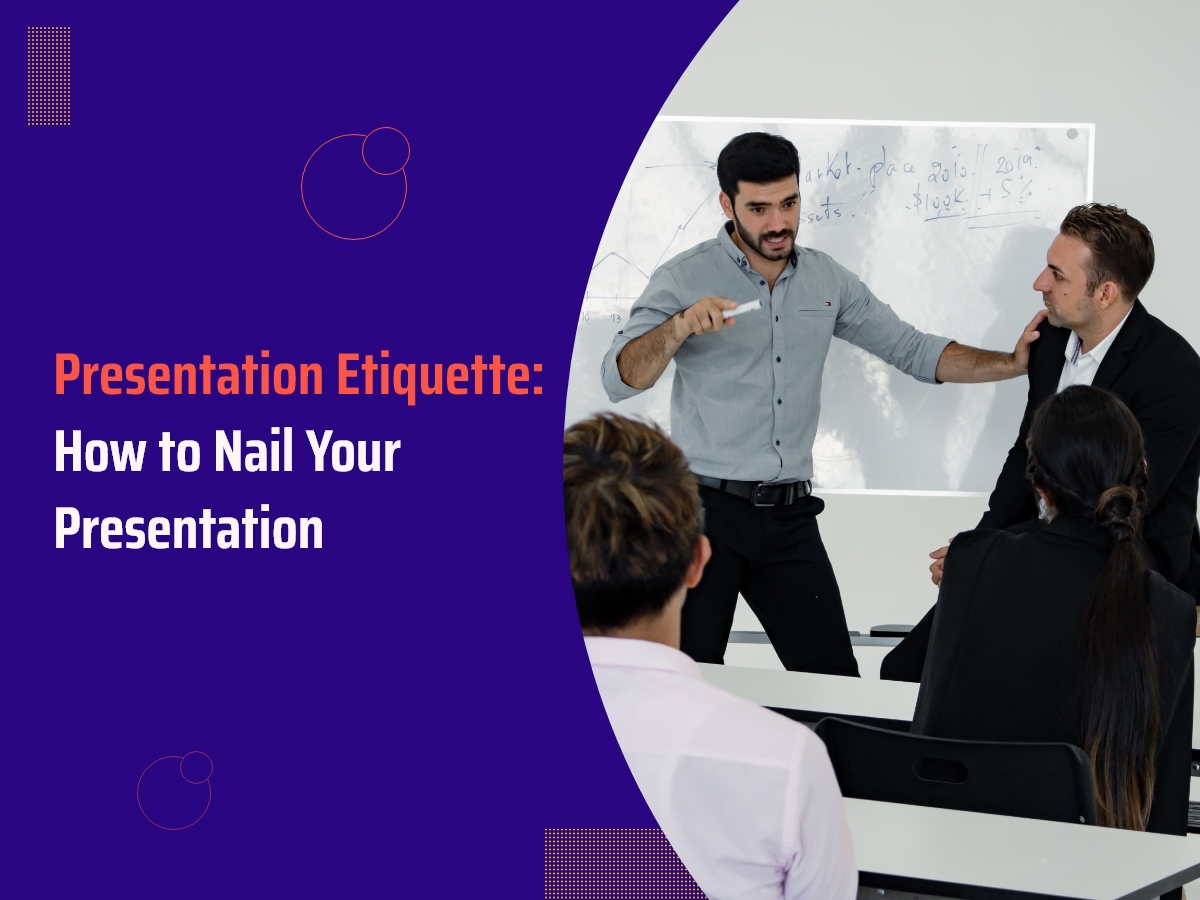Have you ever given a thought about the initial impressions that we make before we actually start delivering a presentation or speech? It’s worth the weight of gold. It becomes all the more important as it’s all about the vibe you put out. It helps establish the initial connect. However, is there any rulebook for the right way to handle yourself? Or, do you have any idea of the presentation etiquette? But do they really matter?
I’d say—certainly yes. Following these etiquettes certainly helps. They’re like the ultimate go-to for presentation dos and don’ts. Those who know it nail it, while others do not so much. But either way, you’ve got real-life examples of presentation manners that can either make or break the deal. Even various research studies prove its importance.
Dr. Albert Mehrabian, who is best known for his work in the field of nonverbal communication and the psychology of human communication, explains the importance of the non-verbal part that spells all the magic. It’s only a small percentage of communication actually comes from the words we say.
Why Does This Matter?
One of the key findings that emerged from Mehrabian’s research is often summarized by the 7-38-55 rule.
According to this rule:
- only 7% of the message’s impact is attributed to the words we use.
- 38% comes from vocal elements such as tone, pitch, and rhythm of speech.
- and a significant 55% is influenced by nonverbal cues like facial expressions, gestures, and body language.
However, it’s important to note that this rule is often misinterpreted or taken out of context. The percentages don’t reflect specific situations where the spoken words, tone of voice, and nonverbal cues are incongruent, such as when someone’s words and body language don’t match.
The manner in which we speak, our tempo, and our overall demeanor communicate far beyond our words alone. Our nonverbal signals, especially the sense of assurance we radiate, possess the ability to magnify the effectiveness of our verbal expressions or, conversely, diminish them.
You may like also: 5 Strategies To Improve Communication in the Workplace.
8 Presentation Etiquettes to Master
These etiquettes, when applied together, create a cohesive presentation style that projects confidence, professionalism, and engagement. Effective presentations are not just about conveying information; they’re about connecting with your audience and leaving a lasting positive impact.
- Confident Body Language: Maintain an upright posture, make purposeful gestures, and sustain eye contact with your audience. Confident body language conveys your authority and keeps your audience engaged. It’s like, our body language and tone play a massive role. So, nailing those etiquettes? It’s not just a good idea, it’s practically a game-changer. As they say, “You never get a second chance to make a first impression.”
To know more about How to Communicate With Confidence?, Read the Blog: 7 Ways To Communicate With Confidence.
- Clear and Articulate Speech: Speak at a moderate pace, enunciate your words clearly, and vary your tone to emphasize key points. Avoid rushing through your content, as this can lead to miscommunication and decreased engagement.
- Engage with the Audience: Interact with your audience by encouraging questions, seeking input, and addressing their concerns. This interaction creates a dynamic and participatory environment that holds your audience’s attention.
- Effective Use of Visual Aids: Utilize visual aids, such as slides or props, to complement and enhance your message. Ensure they are clear, uncluttered, and support the content you’re presenting.
You may like also: Visual Storytelling in PPT Presentations.
- Thorough Preparation: Know your material inside and out. Thorough preparation builds your confidence, reduces nervousness, and allows you to handle questions and discussions with ease. Speak at a pace that lets your words sink in. Remember what Dwayne Johnson (The Rock) said, “Be articulate. Be passionate. Speak from your heart.”
- Be Adaptable: Always be prepared for unexpected situations, technical glitches, or questions you may not anticipate. Demonstrating adaptability showcases your poise and ability to handle challenges gracefully.
- Professional Appearance: Dress appropriately for the occasion and your audience. Your attire should reflect respect for the setting and contribute to the impression you want to convey.
- Own the Stage: Why is it important? Sticking to one spot makes you look stiff. If you look stiff, everything you are representing is stiff. Own your stage. Arrive early and spend some time knowing the space you have to work with. Move around it so you can address every part of the room. The body language you use on the stage also aids in conveying your message. Keep it precise and simple. Every movement should have a specific purpose. Don’t just move for the sake of moving.
To know more about What makes a presentation impactful?, Read the Blog: Powerful Presentation: What makes a presentation impactful?
Closing Thoughts
To culminate, the journey from the inception of a presentation involves nuanced dynamics. The subtleties of body language, vocal modulations, and nonverbal cues converge to mold the reception of our words. Another thing is that presentation etiquettes are not a mere protocol; it’s the art of engaging dialogues, weaving confidence, adaptability, and authenticity into the very fabric of the discourse. And as we delve into the spotlight, encompassing the stage with purposeful movement.






